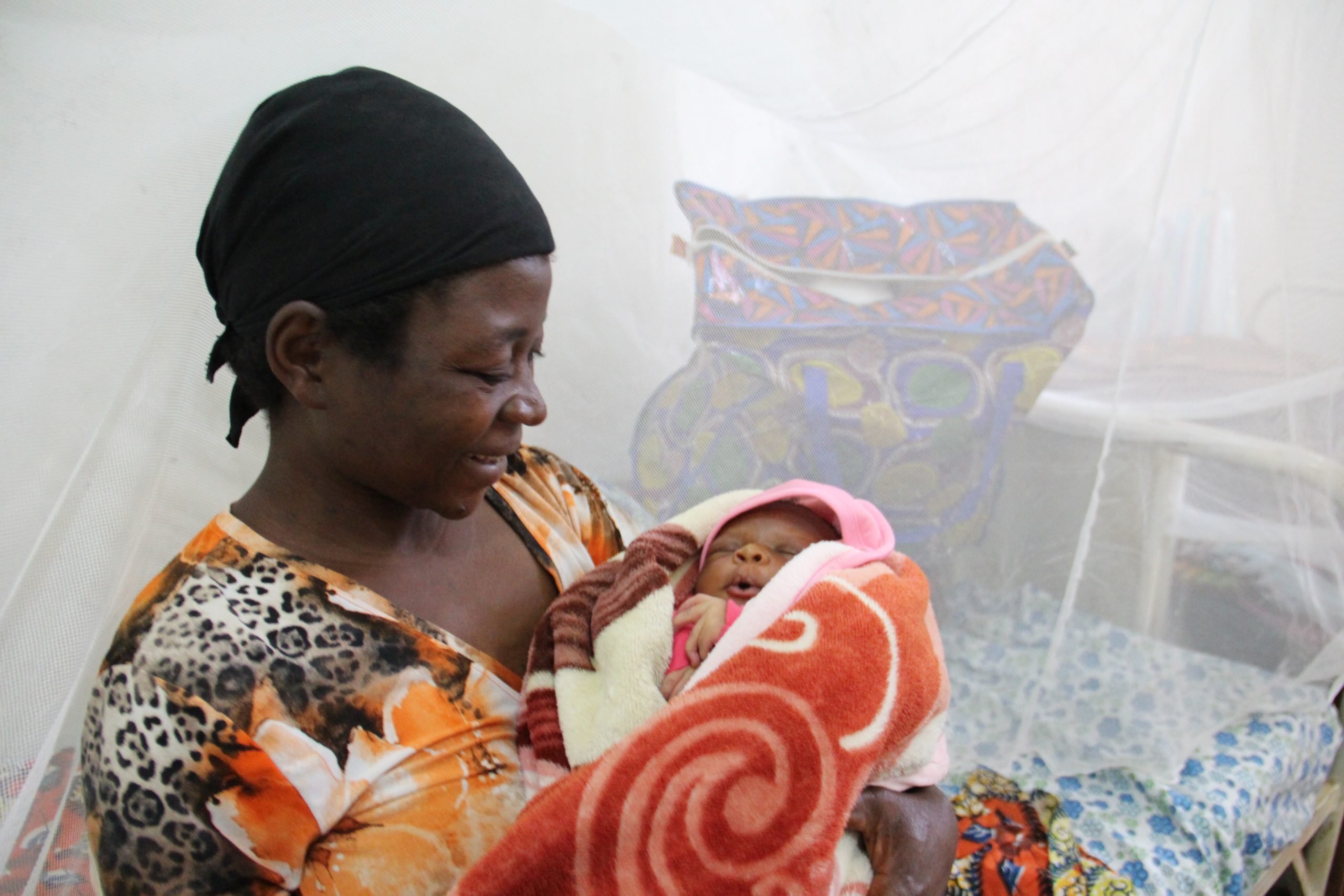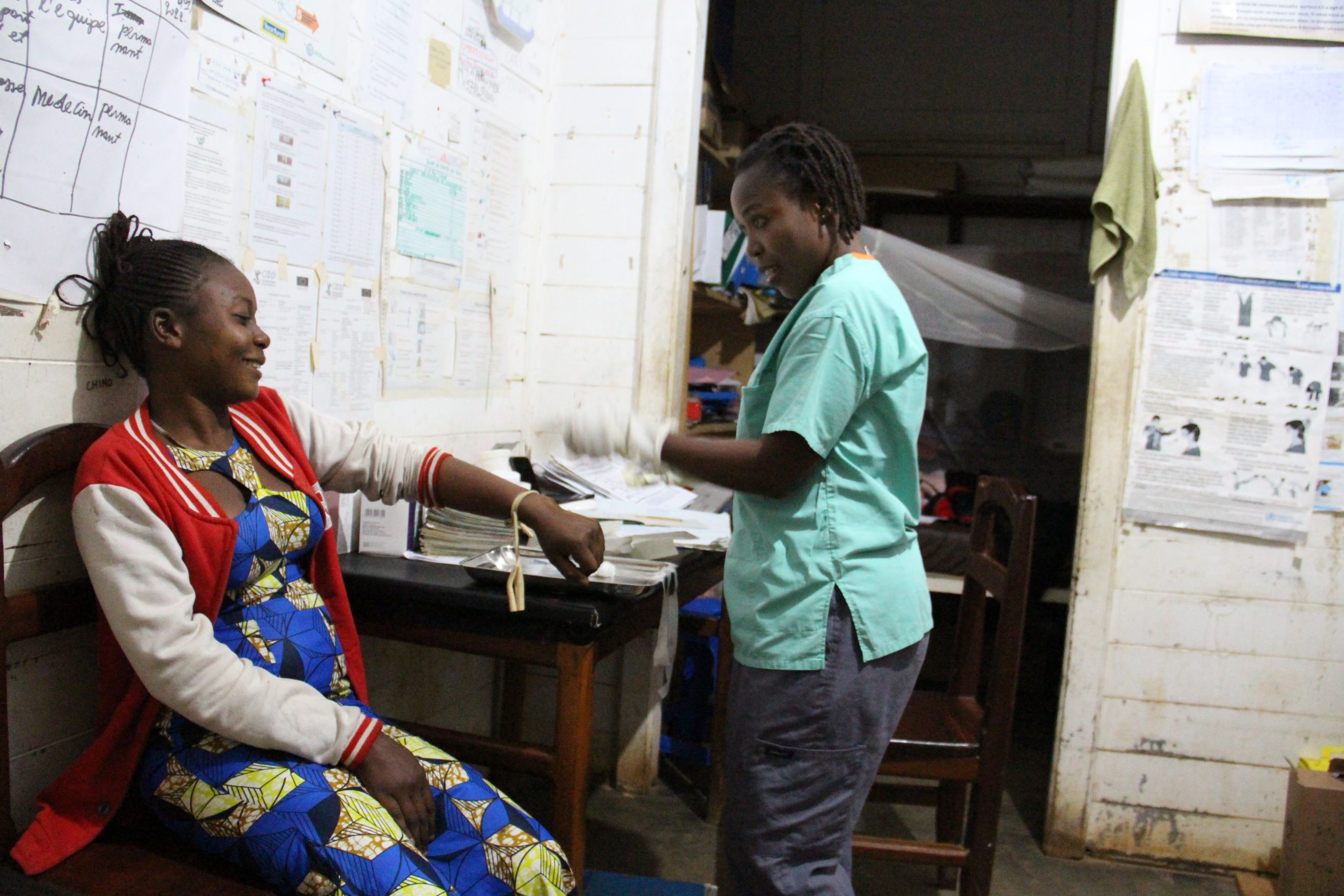Health Facility Electrification Brings Needed Change to Mothers, Babies, and Health Providers in the DRC
Published on April 25, 2023
In some rural areas of the Democratic Republic of the Congo (DRC), only an estimated 15 percent of the population has access to electricity.1 For expectant mothers living in fragile settings, it is an extra worry not knowing whether a facility will be adequately illuminated if the baby is delivered during the night.
But for 24 health facilities in North Kivu Province, in northeast DRC along the Rwanda and Uganda borders, MOMENTUM Integrated Health Resilience recently funded the installation of solar panels to enhance its maternal, newborn, and child health care efforts. Although MOMENTUM is not focused on infrastructure, the results have provided significant benefits for both communities and health care providers.

Sarah Kavira Mwambi, 23, lives four kilometers from Buhumbani Health Facility in Mabalako Health Zone. During her recent second pregnancy, she attended antenatal sessions at the facility. There she learned how to best manage her pregnancy, the importance of proper nutrition, and preparations for having her baby. Her first baby was born before the facility had electricity, and she explained the difference.

“During my first pregnancy, I had to come with a flashlight for delivery. I remember how nurses used to be afraid to work at night because they couldn’t see the patient properly, especially for transfusions. They couldn’t take advantage of critical technologies like injections, microscopes, or any other medical supplies to make a diagnosis, because of darkness” and lack of electricity, said Sarah. “This time, I was admitted to this health facility in active labor, with a full-term pregnancy. I gave birth to a baby girl in a cool environment with lighting. So, with electrifying the health facility, the care of mothers and babies is safer. I no longer have to worry.”
“Access to electricity is a powerful solution that makes improvements to our quality health care services for mothers and their families. It’s crucial that every woman experience labor and birth in healthy and comfortable conditions,” said Alphonsine Katsungu, 28, a nurse at the Boikene Health Facility in Beni. “When health facilities have sufficient and reliable power, women can more safely give birth at night in well-lit delivery rooms. The medical equipment can be better, and clinics can (offer) lifesaving services for newborns, children, and adults.”

A key indicator of the powerful change the solar panels have brought is the increased number of patients who are accessing the facilities. This is particularly important because it is often very hard to earn the trust of the community, and medical staff in the past often worked under precarious conditions in these facilities that did not inspire community confidence.

Today at the Boikene Health Facility where nurse Alphonsine works, close to the town of Beni, approximately 35 patients are treated daily, and an average of 40 children are born monthly, both day and night. Prior to electrification, the daily average for clients was about 25 per day, with 28 babies born monthly. Other facilities have seen up to double the number of mothers giving birth each month.

There have also been some unanticipated benefits. Staff can now keep their smart phones fully charged at the facility, allowing them to keep in touch with the community. And nighttime services benefit not only the health of community members, but also their pocketbooks. Before electrification, rural community members needed to spend money for flashlights and batteries or kerosene for lamps to bring to the facilities, and they paid others to charge mobile phones. They were prepared to sacrifice a considerable portion of their limited income to get power. The health facilities help to offset these needs by allowing patients and caregivers free access to phone charging, and of course client flashlights and lamps are no longer needed.

The 24 clinics, which are located mostly in rural areas, are funded by the DRC Ministry of Public Health (Ministère de la Santé Publique), USAID, and other nongovernmental organization partners. Their purpose is to provide communities with a range of primary health care services that otherwise are not available, including prevention, information, and integrated services, such as pre- and postnatal care, nutrition screening and counseling, and immunizations. The costs of the solar panel system were covered by MOMENTUM through USAID Mission funding.
Having facilities that are electrified and lighted at night should improve the country’s ability to provide safer, more equitable, and better quality of care to all its citizens, but especially mothers and infants. This is important in the DRC, where the average woman will give birth to 5.9 children over her lifetime.2 And the mortality rate for children under five is 81 per 1,000 live births.3 This is well over double the global average of 37 deaths per 1,000 live births.4

“No woman should give birth in the dark. No consultation should be carried out by flashlight or candlelight, and no child should be left vulnerable to disease because of no access to health care in the night,” concluded nurse Alphonsine. “As a nurse, reliable energy has contributed to a more efficient working environment, which ultimately enables more people to receive healthcare.”
References
- World Bank and other data as of 2020: https://data.worldbank.org/indicator/EG.ELC.ACCS.RU.ZS?locations=CG.
- According to UN data from 2019: https://data.un.org/Data.aspx?q=birth+rate+&d=PopDiv&f=variableID%3A54.
- World Bank data, 2020: https://data.worldbank.org/indicator/SH.DYN.MORT.
- WHO data, 2020: https://www.who.int/data/gho/data/themes/topics/topic-details/GHO/child-mortality-and-causes-of-death

